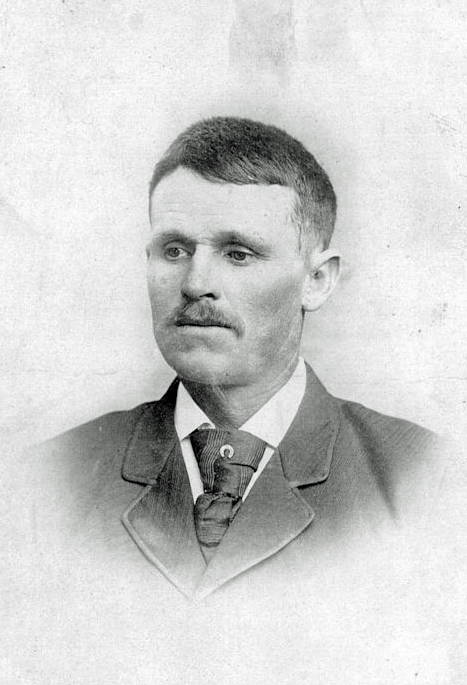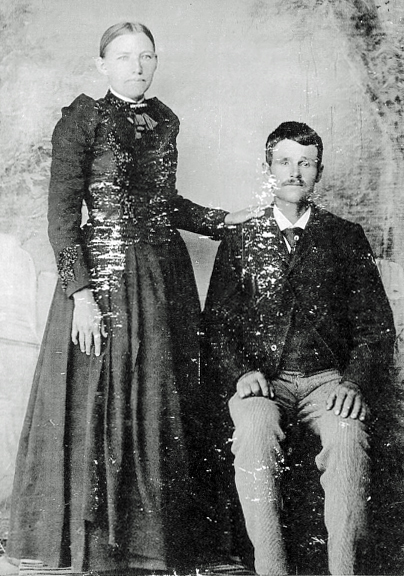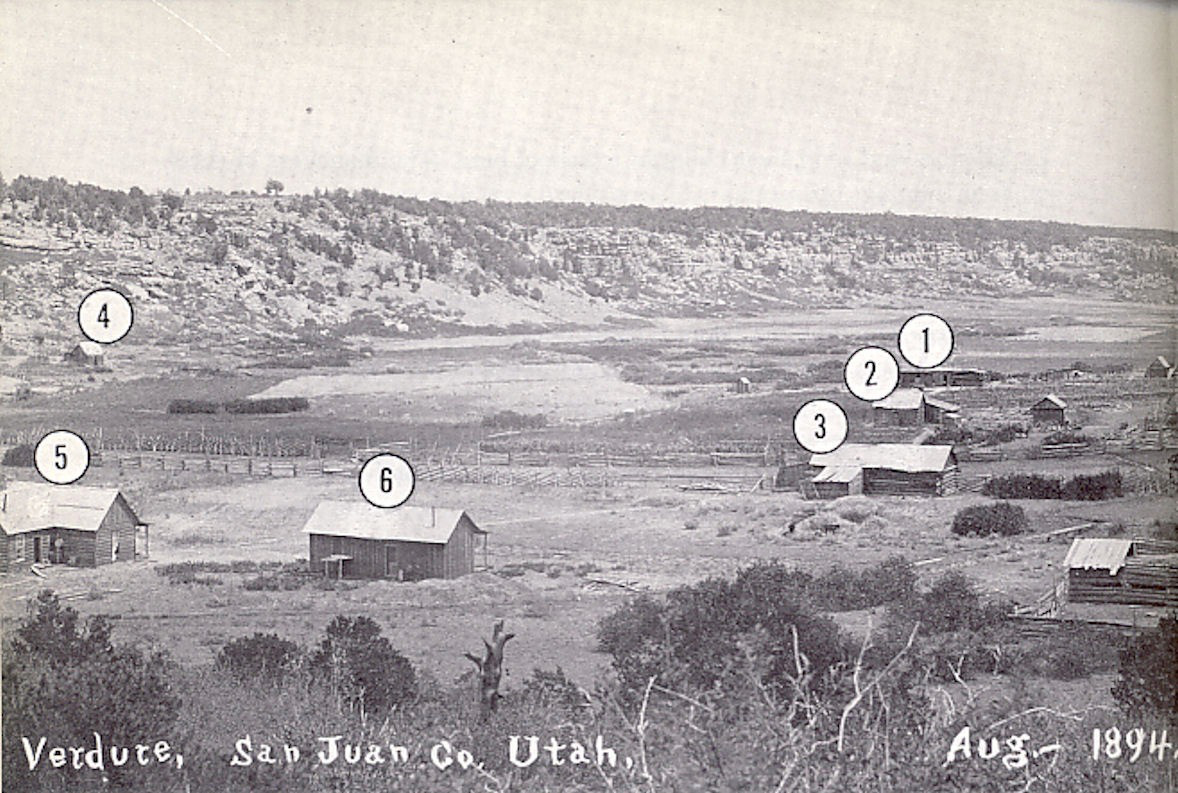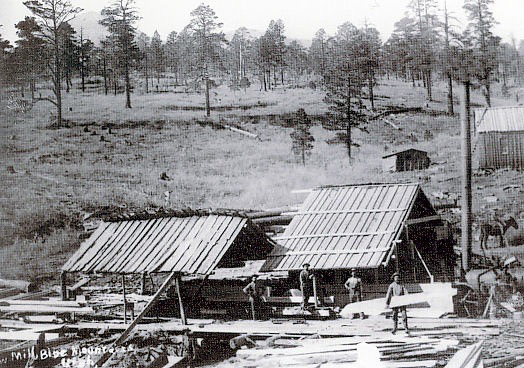Life Sketch of Willard George William Butt
Willard George William Butt
Born: 29 July 1859 at Parowan, Iron, Utah, USA
Parents: Urian Butt and Bridget Rogerson
Married: Julia Anna Mariah Nielson, 11 Nov 1883 at St. George, Washington, Utah, USA
Died: 9 June 1919 at Cortez, Montezuma, Colorado, USA
Julia Anna Mariah Nielson
Born: 13 April 1862 at Parowan, Iron, Utah, USA
Parents: Jens Nielson and Elsie Rasmussen
Died: 6 May 1941, Provo, Utah, Utah, USA
LIFE SKETCH OF WILLARD GEORGE WILLIAM BUTT
Uriah Butt, shoemaker, sailed from England in 1854, after joining the Church of Jesus
Christ of Latter-day Saints. On his arrival in Salt Lake City, he was sent to settle in
Parowan. Bridget Rogerson came to Utah in 1856, as part of the Martin Handcart company,
reaching Salt Lake City after much suffering on December 1, 1856. She was also sent to
settle in Parowan. Just weeks after the company arrived in Parowan, Uriah and Bridget
Rogerson were married on February 8, 1857.
They made their home at Parowan, but as the skills of a shoemaker were needed in St.
George, Uriah was sent there temporarily. Their first child was a son, Willard George William
born in Parowan on 29 July 1858, a daughter, Eliza, followed in 1860 who only lived eleven
months. The third child was another son, Named Parley Rogerson was born 29 January 1862.
In all, the Butts had eight children.
Willard, had very little schooling, and his brother, Parley, only completed the 4th
grade. The boys were expected to help support the family, and they took jobs in Parowan,
Leeds, Tropic, Silver Reef, and freighted from Pioche, Nevada. He and Parley also ran
dairies on Cedar Mountain.
Willard was among those to receive a "call" to the San Juan Mission in late 1879. The
call came because of the depredations of the Indians on the white people settled
in southwestern Utah. The Indians were coming across the river and driving horses and
cattle away. The church hoped by establishing a colony to make friendship with and civilize
the Indians, also to put a stop to these depredations.
Preparation for this general move had been in the making all the time a company of 26
scouts seeking a suitable location. This company included Willard's younger brother, Parley.
Immediately after the return of the scouting party, 250 men, women and children,
with 83 wagons, and 1, 000 cattle journeyed to the meeting place, Forty Mile Spring in the
Escalante Desert. Instead of following the route taken by the 26 scouts, they took what
they thought was a shorter way, via Potato Valley, down the Escalante desert, east of the
Kaiparowits Plateau, across the Colorado near its junction with the San Juan, up the San
Juan to its upper valley and Fort Montezuma, with the thought in mind of finding other
valleys in which to make settlements.
Escalante was the last edge of civilization so they spent a few days there repairing and
filling up their wagons and then moved on to Forty Mile Spring. From here it was necessary
to explore a route for a wagon road. Four men were selected for this exploring job --
William Hutchins, George Lewis, George Hobbs, and Kumen Jones. These men took pack horses
and found the Colorado river 20 miles further south, but impassable because of the
perpendicular cliff. Following a cart track about two miles northeast to the junction of
the Escalante and Colorado rivers, a small boat that previous explorers had left was
found, and they crossed the river in it, two at a time and then went on for two days 12
miles east of the river and then decided they were too low down the draw and were boxed
in with box canyons, so returned to Forty Mile Spring.
Bishop Andrew Schow, James Collett, and Charles Hall arrived with a row boat on a wagon,
and said they would show them the way. Ten men took this row boat to the river and crossed
and took it down the Colorado River intending to take it up the San Juan, but came to a
large rapid and so the river route was given up. While they were at dinner, five other
men came down with packs on their backs and tried to find an overland route. Each venture
made turned out to be impossible, so they went back and reported.
With the Escalante chasm on the east, Kaiparowits Plateau, a continuous cliff on the
west, and twelve feet of snow on the Escalante Mountains, by which route they had come to
Forty Mile Spring, and with but little feed for cattle and horses, it was a gloomy outlook.
Arriving back at Forty Mile Spring, the question became was the San Juan Mission to be a
failure? Many brave men and women in that camp said "no".
They pondered over the situation and wondered what they could do. George Hobbs, in whom
they had lots of faith, said they could get across. Capt. Smith and Bishop Schow then
expressed their faith in the judgment of Hobbs, and a unanimous vote was taken to go
through.
The company then moved on to Fifty Mile Spring; part of the company remained there,
but most of the party went on to the Hole-in-the-Rock. About six weeks were spent blasting
and chiseling the road down to the Colorado.
Willard Butt was one of the men who supervised the group's herds of cattle and horses, often
needing to take them some distance from the trail for adequate feed. On the 28th day of
January, the wagons had gone through the Hole and been floated across the river, the horses
and cattle had been forced to swim across and the company began their trip onward. At Slick
Rock, it was necessary to build a road to get the wagons to the bottom. On March 1st, they
reached Lake Pagharit, where food and water for the animals were plentiful. Here they rested
except for a general wash day,
When they reached Clay Hill, they spent three days making a road. At the foot of Clay Hill,
a blinding snow storm made it necessary to erect temporary shelter for the women and children.
The men and animals suffered greatly from the cold. Through wind driven snow, they pushed on,
passing through many miles of dense forest.
After about thirty days of hardship, with little to eat, and building a road and
cutting a passage through the forest, doubling teams to get through the mud, they reached
Comb Wash. On April 6th, 1880, the main party of the camp reached what is now the site of
Bluff. Montezuma Fort was still fourteen miles further on, but in their tired and weakened
condition, they decided to settle here permanently. The heat was almost unbearable in these
sandstone cliffs, but there was no time to waste as irrigation ditches must be made, land
plowed and planted to crops. As soon as possible a fort twenty-four rods square was built
to protect them from the Indians.
Some of the original band returned after seeing the actual destination with their own
eyes, others moved on up the San Juan. Still others set to work to build the new town. Willard
went into Colorado and found employment at a sawmill at Pagosa and later at another saw mill
in Mancos. He sent his earnings back to Bluff to help meet the residents' needs. After he
came back to Bluff, seeing they had only cottonwood at Bluff for lumber, which writhed
terribly when cut, Willard sought another solution. He and George Ipson went up onto Elk and
Blue Mountain to cut Ponderosa pine into boards for sluice gates, floors and other needs.
They dug a pit, and using a whipsaw cut the first boards in the county. Later on, Willard,
with his brother Parley, established a sawmill near that first saw-pit. He also located
sites suitable for dairies, to which he also returned. Never idle and with an eye to the
future for new projects, they talked of future opportunities.
During the summer of 1885, Willard, Parley, and their wives went to Elk mountains and
ran a dairy. The spring where they dairied is still known as Butt Spring. He also introduced
a "blooded stallion" into the herd of horses pastured there. Improving the stock among the
horses, cattle and dairy cattle were just some of Willard's contributions.
During the mid-1880s, Willard became sheriff of the county. Tales of his fearless acts
to apprehend and disband trouble makers fill the volume "Dick Butt Sheriff of San Juan."
In 1893, he and his family relocated to Verdure. Along with hs dairies, his saw mill,
his cattle and horses and his wholesale freight operations with six horses and two wagons,
he was also a farrner and raised pigs to sell in the fall after they had fattened in the
fields or among the acorn groves.
He liked to produce, and as a man destined to make substantial contributions to the
important San Juan region, he prospered in everything he set his hand to. In spite of
the many who defaulted on their payments, in spite of the iron chains of rheumatism,
in spite of time lost on the trail of outlaws that never were found, he prospered. I
think he was one of the men my father, Platte Lyman, had in mind when he used to quote some old
sage or prophet, "A liberal man deviseth liberal measures and by his liberality he
shall live."
After dissolving his business partnership with Parley, he returned to Bluff, invested in
more cattle, and bought a controlling interest in the San Juan Co-op. He rode the range,
even after rheumatism crippled him and forced him to walk with a crutch -- he simply strapped
the crutch to the saddle so it would be available when he dismounted.
During the winter of 1918-19, Willard found he needed to stay at home, as he had
developed a hernia which greatly bothered him when in the saddle. When June came, he got
back on his horse to help with a round-up. Just days later, the rupture was so bad he could
not ride at all, not even back home. Some of the men went after an automobile known to be at
Recapture, and with it got him back home to Bluff. The abilities of his friends and family
were insufficient to mend the hernia, and he was taken to the hospital in Cortez. There, the
doctors were unable to offer any help; he lingered until 9 June.
Sources:
1. Lyman, Albert R. Dick Butt: Sheriff of San Juan.
2. Ellertson, Norman and Carol. Julia Anne Mariah Nielson Butt: A Brief History



